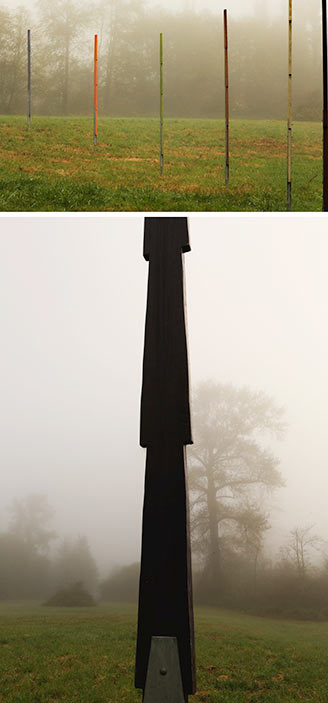
The Marie Louie Project 2014
Meadowbrook Farm, Snoqualmie Valley, WA
Marie Louie, a well-known member of the Snoqualmie tribe, where she was known as lived and traveled extensively in the Puget Sound area in the 19th and into the early 20th century.
Known far and wide for the herbs and medicines she carried in her baskets Marie Louie traveled by foot in the Snoqualmie Valley and by canoe from Lake Sammamish through the Sammamish River (now called the Sammamish Slough) into Lake Washington and the city of Seattle. She plied her trade wherever she went as a respected herbalist healer and midwife to Natives and non-Natives alike. Marie Louie died in 1917, well over 100 at the time of her death.
Fels, joined by curator Greg Watson, and Sammamish arts advocate Barbara Jirsa, created the Marie Louie Project to celebrate her life and work. The project links Marie Louie’s travel in gathering, trading for and dispensing plants, with her roots in the Snoqualmie Valley. The project sees her as a potent metaphor for the regional, mobile, closely-linked culture from which she came, where movement was tied to seasonal changes, availability of plants, and accessibility of water-born travel.
For the first iteration of the Marie Louie Project, in 2014 Fels and his collaborators created a permanent installation at Meadowbrook Meadow, a 400 acre site east of Seattle. The meadow was carved by the departing glacier and burned off annually by natives to maintain the pristine open space and is now managed as a public open space. A site, known locally as the Old Apiary, in the shadow of Mt. Si, was chosen. A group of 10’ high cedar posts were erected in a semicircle in the meadow, each corresponding to a season of gathering.
The ancient calendar of Coast Salish tribes is based on seasonal events in nature, such as ripening berries, salmon runs and winter storms. Traditional life involved travel during much of the year to dig, pick, spear or trap plant and animal resources at their places and times of greatest abundance, returning in winter to the shelter of permanent villages for spiritual duties and to make and repair possessions for the coming year. In ancient times, the Snoqualmie did not number the days of the month; modern month names and the seven day week were introduced by Europeans. Traditional calendar names identify important resources or activities through the year, and are sometimes called Moons or simply “the time of…”
Elders also watched the sky for evidence of the year’s progress. The position of sunrise swings through almost a quarter of the horizon from midsummer to midwinter, so a careful watcher can have accurate knowledge of the year’s progress. The Meadowbrook installation has placed a ‘viewing rock’ where an elder would have watched the seasonal sunrise changes. The half-circle placement of the posts corresponds to the sun’s movement throughout the year. Visitors are invited to sit and look out as Marie Louie, a Snoqualmie elder, would have done.
Fels mixed a palette of colors for the poles using casein paint, each color corresponding to the month’s focus. A key to interpreting the poles is presented at the entrance to the Apiary meadow. Marie Louie likely traveled to Meadowbrook from her home on Lake Sammamish at certain times during the year, since it was by far the largest meadow in the entire area and special plants grew on its edges, and because it was also an important gathering place for Native Americans from both sides of Cascade mountains. Exchanges took place between those that met there, when she would have traded for plants necessary to her work that she could not gather locally.
The Meadowbrook installation was supported by a Site-Specific grant from 4Culture, and additional funding by the cities of North Bend and Snoqualmie, WA as well as funding and logistical support from the Meadowbrook Farm Association.


